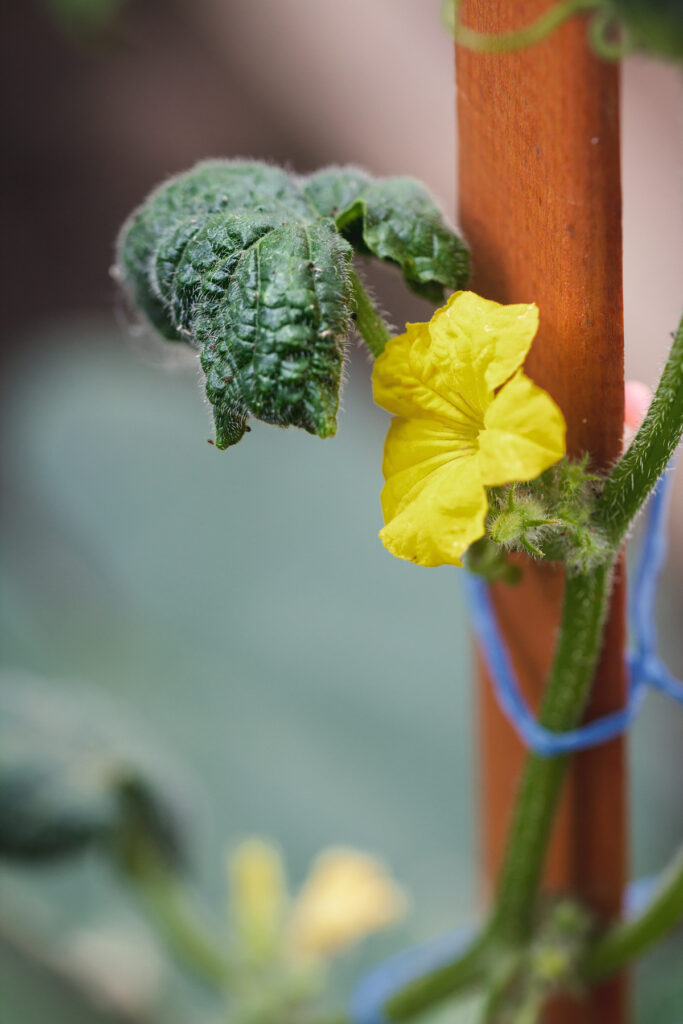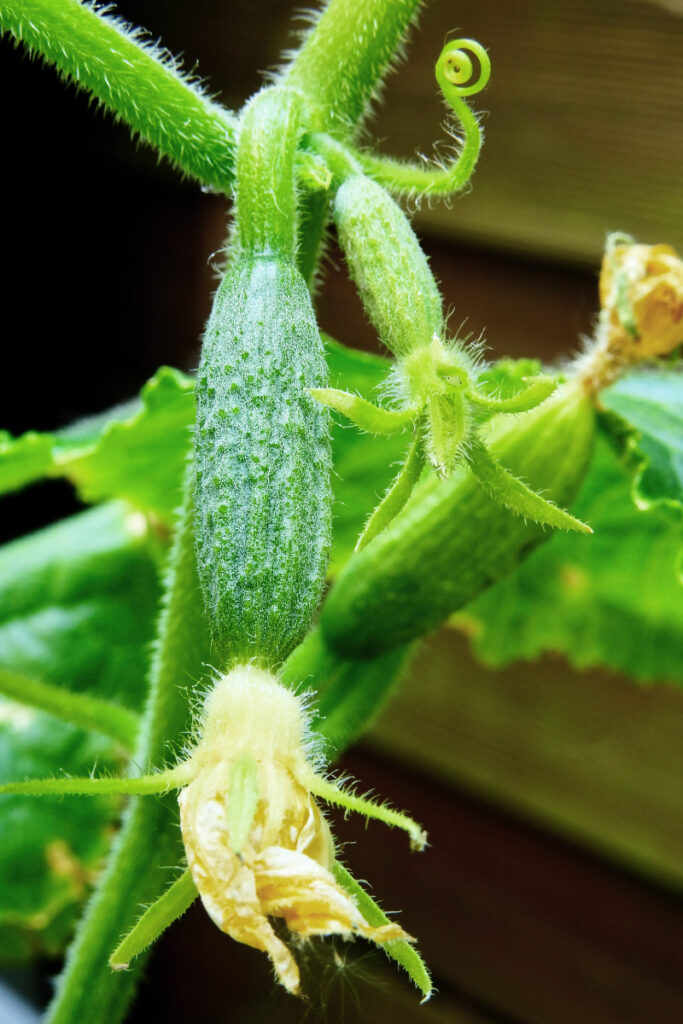Craving Cucumbers? Learn to Grow in Texas!
Growing cucumbers in Texas has been a rewarding and delightful experience for me. The crunchy, refreshing taste of homegrown cucumbers is unbeatable, and it’s always a joy to share the fruits of my labor with friends and family.
In this guide, I’ll share my journey of growing cucumbers in the Lone Star State, along with some helpful tips and tricks I’ve learned along the way.
One of the most important factors in successfully growing cucumbers in Texas is selecting the right variety that thrives in our unique climate. With a bit of preparation and care, you’ll soon be enjoying your very own homegrown cucumbers!
My Journey to Growing Delicious Cucumbers in Texas

Preparing the Soil and Site
Finding the ideal location for cucumbers
Cucumbers love the sun, so it’s essential to choose a location in your garden that receives at least 6-8 hours of direct sunlight daily. Make sure the area has good drainage, as cucumbers don’t like to sit in soggy soil. If necessary, consider building a raised bed to improve drainage.
Soil preparation and enhancements
Cucumbers thrive in well-draining, fertile soil rich in organic matter. Before planting, prepare the soil by mixing in several inches of compost or well-rotted manure. This will help improve soil structure and provide essential nutrients for healthy cucumber growth. You can also add a balanced, slow-release fertilizer to give your plants an extra boost.
Testing soil and adjusting pH, if necessary
Cucumbers prefer slightly acidic to neutral soil with a pH between 6.0 and 7.0. It’s a good idea to test your soil before planting to ensure it falls within this range.
If your soil is too acidic, you can add lime to raise the pH, or if it’s too alkaline, you can add sulfur to lower it. Adjusting the pH may take some time, so be patient and retest the soil after a few weeks to ensure it’s within the optimal range.
Planting and Nurturing Cucumbers
Selecting the best cucumber varieties for Texas
When it comes to growing cucumbers in Texas, choosing the right variety is crucial. Look for heat-tolerant and disease-resistant varieties that are well-suited for our climate. Some popular options include ‘Armenian,’ ‘Diva,’ ‘Marketmore 76,’ and ‘Straight Eight.’ You can also consider bush varieties if you have limited space or prefer container gardening.
Proper spacing and planting techniques
Cucumbers can be started from seeds indoors about 2-4 weeks before the last frost date, or you can sow them directly outdoors once the soil has warmed up to at least 60°F (15°C). Plant seeds about 1 inch deep and 12 inches apart in rows or hills spaced 3-4 feet apart. If you’re using transplants, plant them at the same spacing. Make sure to provide a trellis or other support structure for vining varieties to climb and keep the fruit off the ground.
Mulching, irrigating, and fertilizing
Mulch helps retain soil moisture, suppress weeds, and regulate soil temperature. Apply a 2-3 inch layer of organic mulch, such as straw or shredded leaves, around your cucumber plants. Water your cucumbers consistently, providing about 1-1.5 inches of water per week.
Be sure to water deeply at the base of the plant to encourage strong root development and avoid wetting the leaves, which can lead to disease. Fertilize your cucumbers every 2-3 weeks with a balanced, water-soluble fertilizer to promote healthy growth and fruit production.
Defending against pests and diseases
Cucumbers can be susceptible to pests like cucumber beetles, squash bugs, and aphids, as well as diseases such as powdery mildew and bacterial wilt. Monitor your plants regularly for signs of pests or disease, and take action promptly if needed.
Use insecticidal soap or neem oil to control aphids, and floating row covers to protect against cucumber beetles early in the season. Remove and dispose of any diseased plant material to prevent the spread of infection.
Harvesting and Preserving Cucumbers
Picking cucumbers at the right time
Cucumbers are typically ready to harvest 50-70 days after planting, depending on the variety. Pick your cucumbers when they’re firm, bright green, and have reached their desired size. Smaller cucumbers tend to be more tender and flavorful, while overripe ones can become bitter and develop tough seeds. Harvest your cucumbers regularly to encourage continuous fruit production.
Storing freshly harvested cucumbers
Freshly picked cucumbers can be stored in the refrigerator for up to a week. To keep them crisp, wrap each cucumber in a slightly damp paper towel before placing it in a plastic bag. Store the bag in the crisper drawer to maintain optimal humidity.
Preserving cucumbers through pickling and other methods
If you have an abundance of cucumbers, consider preserving them through pickling, fermenting, or even freezing. Pickled cucumbers make a delicious snack or condiment and can be stored for months in a sealed jar. You can also experiment with making relishes, chutneys, or even cucumber-infused vodka.
Enjoying the Fruits of My Labor: Recipes and Ideas for My Texas-Grown Cucumbers

Incorporating fresh cucumbers into meals
Fresh, homegrown cucumbers are incredibly versatile and can be enjoyed in numerous ways. Here are some ideas to incorporate them into your meals:
- Salads: Add sliced cucumbers to your favorite green salad or make a refreshing cucumber salad with tomatoes, red onion, and a tangy vinaigrette.
- Sandwiches and wraps: Layer thinly sliced cucumbers in sandwiches or wraps for added crunch and flavor.
- Gazpacho: Blend cucumbers with tomatoes, bell peppers, and other fresh vegetables to create a delicious, chilled soup perfect for hot summer days.
- Sushi rolls: Use cucumber slices as a filling for homemade sushi rolls, along with avocado, crab, or smoked salmon.
- Smoothies and juices: Combine cucumbers with other fruits and vegetables like spinach, kale, or apples for a nutritious and hydrating drink.
Pickling cucumbers for a tasty snack or condiment
Pickling is a fantastic way to preserve your cucumber harvest and enjoy it throughout the year. There are countless pickling recipes available, ranging from classic dill pickles to sweet bread and butter pickles.
You can also experiment with different spices and flavorings, such as garlic, hot peppers, or mustard seeds, to create your own unique pickled cucumber recipe.
Sharing my harvest with loved ones
One of the most rewarding aspects of growing cucumbers in Texas is sharing the fruits of my labor with friends and family.
Gifting a jar of homemade pickles, bringing a cucumber salad to a potluck, or simply offering a bag of freshly harvested cucumbers to a neighbor are all great ways to spread the joy of homegrown produce.
Conclusion
Reflecting on my experience growing cucumbers in Texas, I am grateful for the lessons I’ve learned and the satisfaction of enjoying my own homegrown produce. Through trial and error, I have discovered the best practices for successfully cultivating cucumbers in our unique climate, and I’m thrilled to share this knowledge with fellow gardeners.
I encourage anyone with a love for cucumbers and an interest in gardening to give it a try. With the right variety, proper care, and a bit of patience, you too can experience the joy of growing delicious, crunchy cucumbers in your own backyard.
So go ahead, satisfy that cucumber craving, and embark on your own journey to growing cucumbers in Texas!